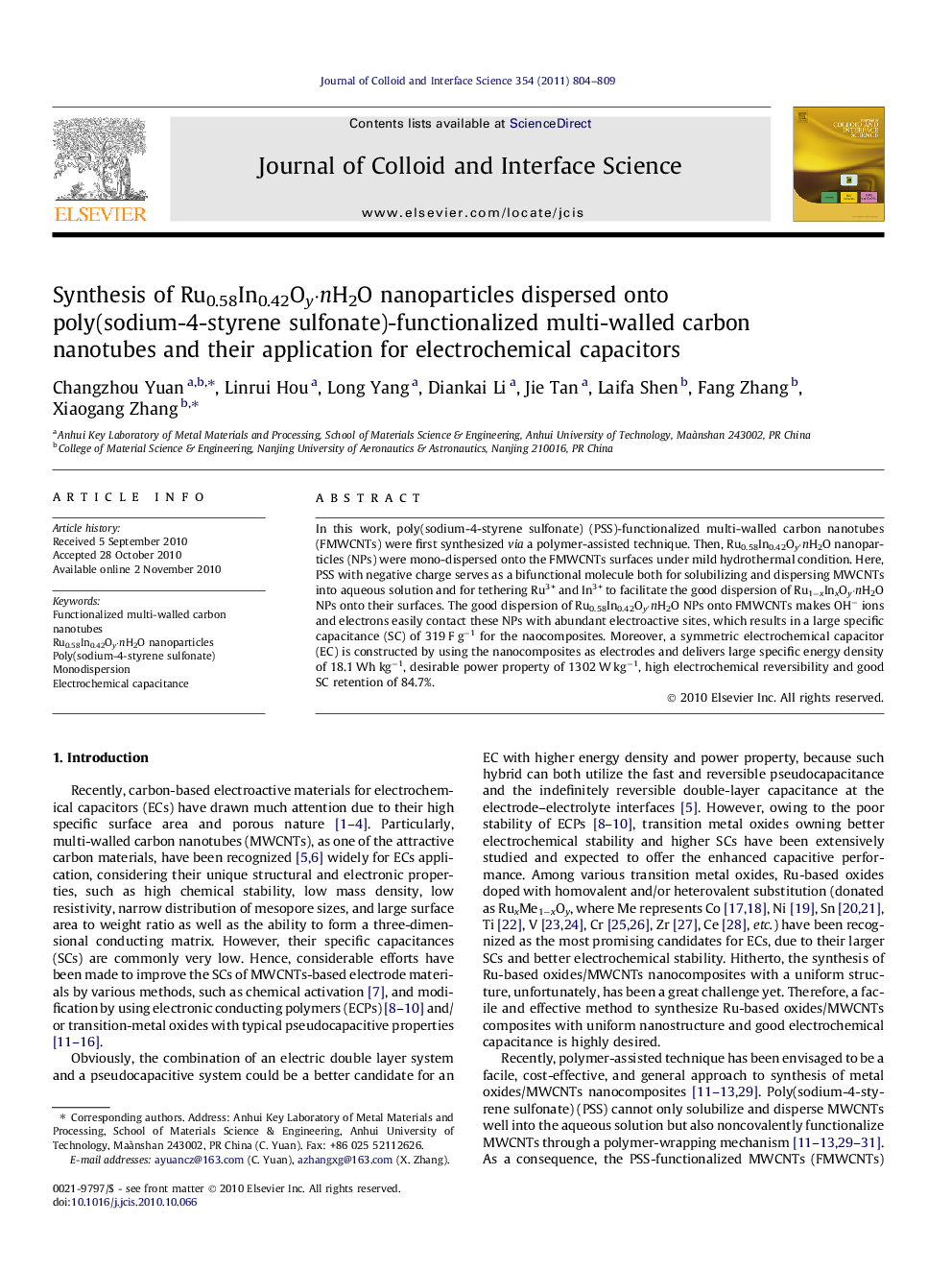| Article ID | Journal | Published Year | Pages | File Type |
|---|---|---|---|---|
| 608949 | Journal of Colloid and Interface Science | 2011 | 6 Pages |
In this work, poly(sodium-4-styrene sulfonate) (PSS)-functionalized multi-walled carbon nanotubes (FMWCNTs) were first synthesized via a polymer-assisted technique. Then, Ru0.58In0.42Oy⋅nH2O nanoparticles (NPs) were mono-dispersed onto the FMWCNTs surfaces under mild hydrothermal condition. Here, PSS with negative charge serves as a bifunctional molecule both for solubilizing and dispersing MWCNTs into aqueous solution and for tethering Ru3+ and In3+ to facilitate the good dispersion of Ru1−xInxOy⋅nH2O NPs onto their surfaces. The good dispersion of Ru0.58In0.42Oy⋅nH2O NPs onto FMWCNTs makes OH− ions and electrons easily contact these NPs with abundant electroactive sites, which results in a large specific capacitance (SC) of 319 F g−1 for the naocomposites. Moreover, a symmetric electrochemical capacitor (EC) is constructed by using the nanocomposites as electrodes and delivers large specific energy density of 18.1 Wh kg−1, desirable power property of 1302 W kg−1, high electrochemical reversibility and good SC retention of 84.7%.
Graphical abstractRu–In binary nanoparticles highly dispersed onto the poly(sodium-4-styrene sulfonate)-functionalized multi-walled carbon nanotubes were synthesized by mild hydrothermal method and delivered good electrochemical capacitance at high rates.Figure optionsDownload full-size imageDownload high-quality image (69 K)Download as PowerPoint slideResearch highlights► Carbon nanotubes were functionalized by poly(sodium-4-styrene sulfonate) with negative charge. ► Ru0.58In0.42Oy·nH2O nanoparticles were dispersed on functionalized carbon nanotubes. ► High dispersion resulted in great utilization of nanosized Ru0.58In0.42Oy·nH2O. ► The nanocomposites delivered larger energy density and higher power density.
